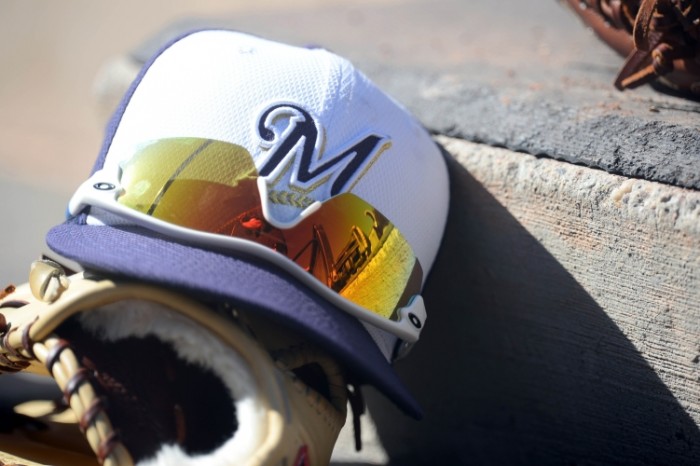On Wednesday afternoon, the 2017 Brewers draft came into sharper focus as KJ Harrison and Tristen Lutz both signed. If any prospects were to personify the Brewers’ draft strategy, Lutz and Harrison would be two of the best candidates as they are both huge risk projection plays by the Milwaukee scouting department. Lutz is a risky projection play as a power-first right fielder, although BaseballAmerica also praised the slugger’s fielding ability for that corner position; dreaming big, Lutz sounds like a “true” all around right fielder, but it could take him five years to reach the MLB (let alone that ceiling). Harrison is a gamble on a catcher who was already moved off the position for various reasons in college, raising questions about whether the prospect will be a Catcher In Name Only and devolve into a roaming bat, or if he will fit as a catching project. If anything, the 2017 draft is going to be a true test for the Brewers player development department under GM David Stearns, for Director – Amateur Scouting Tod Johnson landed a number of boom-bust players who will have an especially long path to the MLB.
Under ex-Scouting Director, now Vice President – Scouting, Ray Montgomery, the Brewers executed drafts in 2015 and 2016 that were perhaps as impressive for their impeccable talent and bonus slot pricing as they were for the actual prospects landed. Montgomery aggressively used the Milwaukee bonus pool in 2016 to land C Payton Henry, 3B Chad McClanahan, SS Trever Morrison, CF Zach Clark, and LHP Blake Lillis, bolstering a heavy set of top rounds with tools that will be sweet enough to dream on during long development paths. Johnson essentially picked right back up where Montgomery left off, even though the approach to the first five rounds in 2017 look quite different than the 2016 path. Now, awaiting the draft signing deadline, there is a quartet of interesting high value high schoolers to watch for Milwaukee’s draft. According to BrewCrewBall’s running draft tracker (by now a Milwaukee fan’s draft institution), the Brewers front office has approximately $521,000 remaining to spend prior to any of the harshest MLB slot penalties kick in. Paying 75 percent tax on such an overage would price remaining prospects at a cost of approximately $912,000 to the organization.
Following my previous survey of historical draft value, the table below estimates the historical value range for the four highly ranked (BaseballAmerica Top 500) Brewers high school players that remain unsigned. I compare those values with the 2017 MLB draft slot that those players would have been assessed at had they been picked earlier, according to their ranking.
| Prospect | BA Rank | Pick Value | Range Value | HistoricalWAR/Odds | 2017 Slot Equivalent |
|---|---|---|---|---|---|
| RHP Christian Santana | 264 | $1.059M | $0.880M | 0.7 / 21% | $0.142M |
| RHP Justin Bullock | 203 | $0.305M | $1.220M | 0.2 / 16% | $0.209M |
| CF Leugim Castillo | 232 | $0.203M | $1.220M | 0.2 / 15% | $0.167M |
| LHP Karlos Morales | 469 | $0.169M | $0.358M | 0.2 / 13% | - |
| Total | $1.736M | $3.678M | 1.3 / 15.5% median | $0.518M |
Take a look at the draft slot total for these four players: based on the 2017 draft protocol set by MLB, these four players almost perfectly fit the remaining allowable non-penalty overage that the Brewers can spend prior to the deadline. This is quite a nifty value play: Milwaukee will have to shell out significant cash to sign these players, but their value is not so high as to tank the draft into severe penalty zone (after a 10 percent overage, the Brewers will have to pay significant taxes on the overage and begin forfeiting draft picks). Moreover, the Brewers could simply prioritize one prospect or another. For instance, Milwaukee could decide to spend their remaining money on a projection pitching project like Christian Santana, or they could sink more money into the athletic-but-raw Leugim Castillo in order to add to their collection of low-minors toolsheds. In terms of historical value, these players as an aggregate group are worth the $912,000-with-penalty price ta
Even if none of these prospects sign to the Brewers, the draft strategy worked in the sense that the front office stuck with a specific set of gambles and priced them out accordingly. This pricing system and lack of risk aversion puts the Brewers in a position to make a few last minute signings that further expand system depth. Of course, if the Brewers farm system was volatile entering 2017, although promising several potential impact roles for those risky profiles, the club has doubled down on that profile in this current draft. This is the luxury of a deep system with much of the big impact assets at the advanced stages of the minors; the Brewers can afford to gamble on boom-bust in 2017, and perhaps move to more conservative drafting strategies in 2018 and 2019 as the advanced prospects depart via trade or through MLB graduation (or just keep doubling down!). It’s difficult to assess a draft within three years, let alone three weeks, but it should be clear that this current front office are aggressive in terms of pricing risk and talent profiles, and that the 2017 draft exemplifies this approach as a strength for their talent acquisition.
